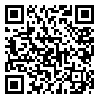BibTeX | RIS | EndNote | Medlars | ProCite | Reference Manager | RefWorks
Send citation to:
URL: http://refahj.uswr.ac.ir/article-1-2118-en.html
This paper evaluates the government policies taken toward at poverty alleviation and equality enhancement after the 1979 revolution and examines the new government's institutional capacity to battle poverty and inequality in the next few years. For this purpose, the evolution of the absolute poverty and inequality of income distribution are measured. There is a clear indications that both factors have been improved in the post revolution era. Author has argued that inequality is the product of class relations and the nature of political power in the society. To this end, the historical economic changes of Iran in the last century is briefly reviewed and ample evidences provided showing how the state power intervened to upgrade the social and economic positions of protected new classes and to eliminate the ancient modes of production. It is argued that in Iran, state has a relative independence from the social classes due to the fact that rich oil resources belongs to govemment and it can distribute economic rents to different groups. Islamic republic of Iran has followed two unsuccessful strategies to eliminate poverty and inequality in the country. The first strategy was to abolish capitalist mode of production and establish an Islamic economy in the country. But in practice this utopia was not realized and a new capitalist class was brought up which has close ties with the political factions of the Islamic state. It is shown that this strategy has produced a giant state owned economy which is inefficient and corrupt and hampered the economic growth in the country and because of the very existence of this economic system the poor can achieve enough income and employment opportunities. The second strategy was to extend the social safety network and protect and enable the deprived. After the revolution government has provided free education and health services and in this area has been very successful. But its program to provide energy and basic food items with subsidized prices to all has benefited rich people more than the poor and caused major misallocation of resources in the economy. It is worth mentioning that the prolonged war between Iran Iraq and rapid growth of population has aggravated poverty and income disparity in the country, hence offsetting part of the government's efforts in this area. It was argued that the chance of newly elected government's program for poverty alleviation to be successful is meager. In fact the good governance is main prerequisite for the desing and implementation of program to chance economic development and poverty reduction. But the governance indicators in Iran have been weak in recent years and the policies of new government is expected to aggravate it move. It is argued that in the absence of badly needed institutional capacity, the government's slogans to improve the situation of poor will end up with a lower economic growth, higher inflation and more unemployment. All of which is harmful for the poor and deprived.
Received: 2015/09/10 | Accepted: 2015/09/10 | Published: 2015/09/10
| Rights and permissions | |
 |
This work is licensed under a Creative Commons Attribution-NonCommercial 4.0 International License. |





